Source: Daily Star
History has its own grim sense of humour. When power betrays the very people from whom it arose, it ignites like a furious blaze, consuming anyone who dares to threaten its inherent drive for freedom.
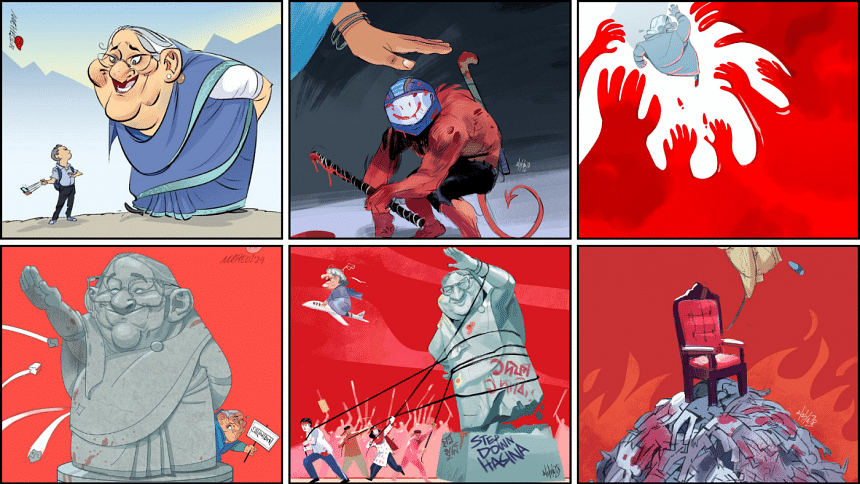
The history of revolution is almost always shaped by artistic resistance. While some fought in the streets, artists wielded pens and pencils as weapons, inspiring and mobilizing the masses with their creations. Political cartoons played a pivotal role in the Anti-Discrimination Student Movement, transforming the revolution with artistic brilliance and courage.

Acerbic political cartoons—hundreds of them—flooded newspapers, publications, walls, and social media. Drik honored this tradition through their exhibition Cartoon Ey Bidroho (Rebellion in Cartoons), held at their photo gallery in the capital’s Panthapath. The exhibition brought together distinguished cartoonists, showcasing the incredible artistic contributions of these revolutionary figures. The initiative is timely, serving artists, spectators, and the cultural ‘renaissance’ currently being witnessed.
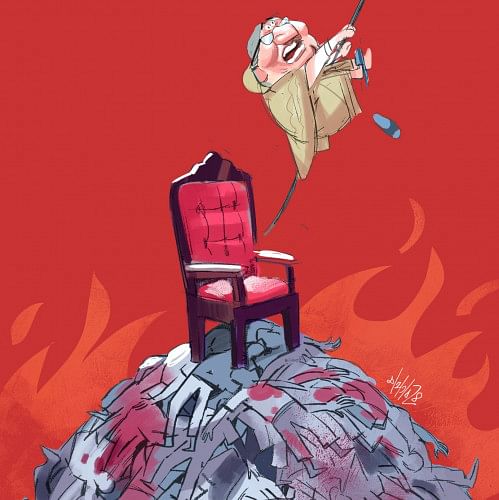
“There was a time when political cartoons, caricatures, satires, graffiti, and other artistic forms of vigilante justice were deeply rooted in our culture to critique and question authority. Cartoons and caricatures used to grace the front pages of every newspaper, delivering potent messages against malpractice and corruption,” said ASM Rezaur Rahman, general manager of Drik and curator of the exhibition. “However, due to undue censorship and the culture of fear perpetuated by the former government, this artform was stifled, threatening to become nearly obsolete.”

Rahman also emphasized the shift in power dynamics with the rise of social media and citizen journalism, particularly during the youth protest movement. Authorities, shaken by the power of this movement, found the usual rules of political engagement upended. Ordinary people, through their phones and personal devices, risked their lives on the front lines to reveal ground realities often beyond the reach of traditional journalists.

Drik’s exhibit showcased the unprecedented draughtsmanship and satirical verve of 82 cartoonists, featuring a well-curated collection of 175 artworks in the Drik Picture Library. One cartoon published on July 15 captured the spirit of the movement perfectly: it depicted the figure of Shontrash Birodhi Raju Sharokh Bhashkorjo, with a red sun at its apex, covered in blood while a black boat floated gloriously amidst the red waves. Another work from the same day portrayed a grotesque red creature, battered with hockey sticks, being blessed by a hand adorned with blue bangles—a vivid critique of authority.
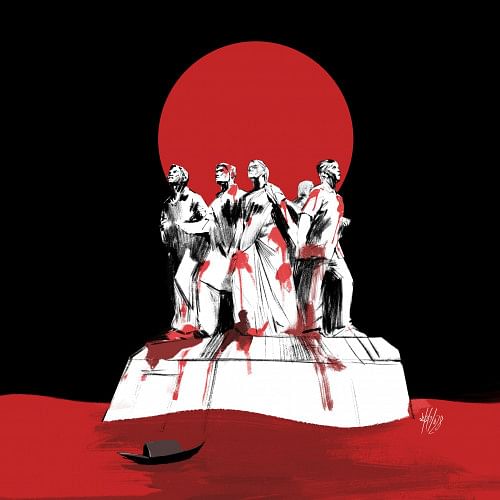
Mahatab Rashid, a cartoonist at The Business Standard, whose work took centre stage at the exhibition, explained his motivation: “I, along with my friends, was involved in the protests. As a cartoonist, I felt bound to create something that spoke to the tyranny we were witnessing. When the Chhatra League brutally attacked my friends and fellow protesters, I felt an unstoppable urge to create. When they killed Abu Sayed the next day (July 16), I had no choice but to resist through my art.”
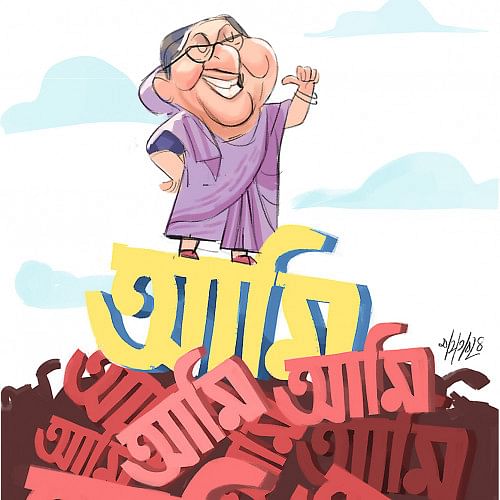
Another of Rashid’s cartoons, which became iconic, depicted a stout woman flying through the air, clinging to a rope with only one sandal on her feet. She flew above a wooden throne placed atop countless corpses. This character, seen repeatedly in Rashid’s work, became symbolic of the oppressive forces within the movement.

Cartoonist Mehedi Haque used his art to strike directly at the authorities. “An artist’s job is to do what’s right at the right time. We paid a debt to the countless deaths and assaults suffered by cartoonists like Ahmed Kabir Kishore,” Haque stated. In one of his artworks, a woman is shown fleeing with only one sandal on her feet, as hands throw trophies named “Muktijuddho” after her. His work captured the inevitable collapse of an oppressive regime, inspiring hope among the protesters.

Reflecting on his work, Haque explained, “As political observers, we know from history that nothing beats the mobilization of middle-class urban people who have nothing to lose. When they take to the streets, the government cannot subjugate their spirit.”
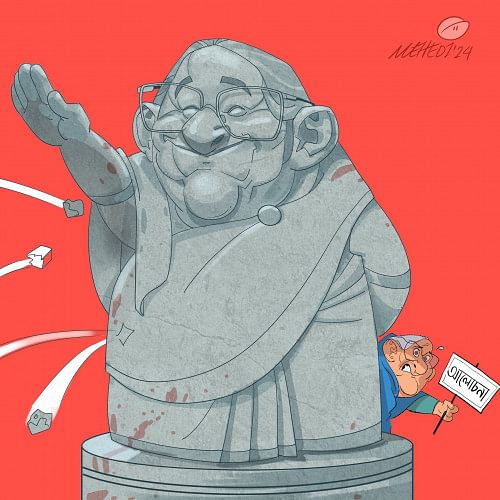
Simu Naser, Founder and Editor of Earki and a curator of the exhibition, praised the unity and determination of the artists. “The first works of art came from cartoonists. Newcomers joined in, posting their works on social media and filling the pages of newspapers. Some were drawn anonymously, others bore signatures, but all of them spread across the internet and took their place in history,” Naser said.
This exhibition, while only featuring a fraction of the political cartoons created during the movement, remains a tribute to the power of art in shaping resistance.
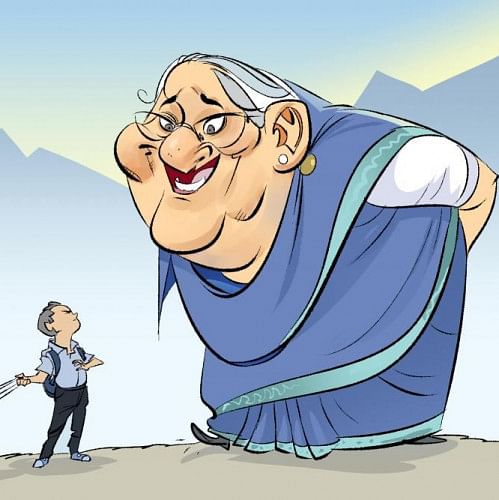
All the cartoonists featured in the exhibition, including, Abdullah Al Zunayed Shadat Mahbub, Mehedi Hasan, Eeha Nawar, Natasha Jahan, Purnota Sondhi, Raeid Hossen, Miskatun Jinat Tonni, Tuba Tanjum and many others only asked for only one thing and that is the end of censorship in their art.
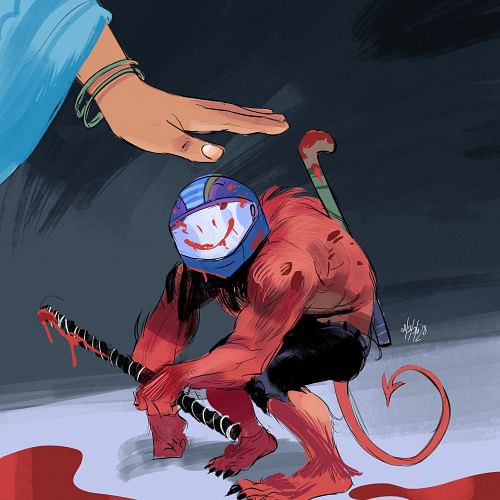
Political cartoons have long served as powerful tools for challenging authority, exposing injustice, and mobilizing the masses. The exhibition highlights the essential role that these satirical artworks play in moments of resistance and revolution. However, censorship threatens to stifle this artistic form, as history shows that oppressive regimes often seek to silence the voices that challenge their power. The freedom to create and express without fear is fundamental to both art and society. When censorship prevails, it not only undermines artistic expression but also stifles the spirit of revolution, muting the voices that dare to speak truth to power.
 For all latest news, follow The Daily Star’s Google News channel.
For all latest news, follow The Daily Star’s Google News channel.